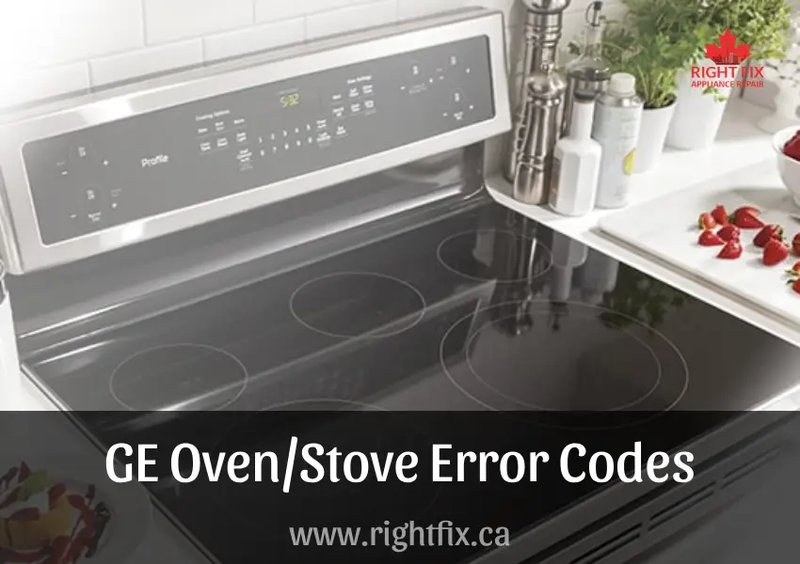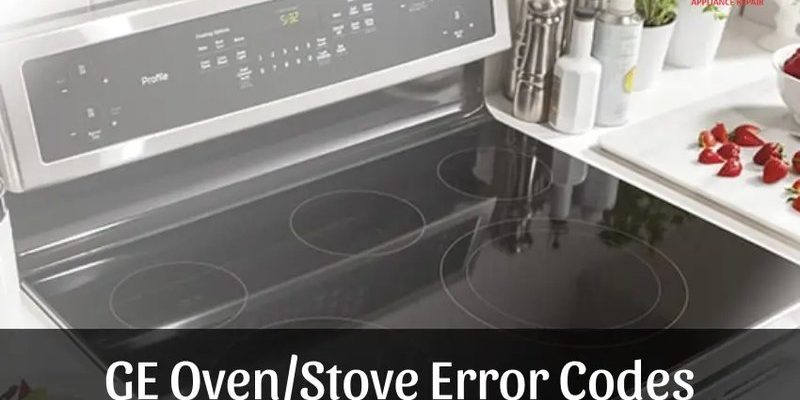
Understanding why this error occurs and how you can prevent it in the future is crucial for any home chef who relies on their oven for daily meals. The good news is that with a bit of preventive care and some basic know-how, you can keep your GE oven running smoothly and efficiently, without any unexpected interruptions. In this guide, we’ll walk through some essential steps to ward off that pesky OE error code for good.
Understanding the OE Error Code
So, what exactly is the OE error code? In simple terms, it’s an alert your oven sends when it senses an issue with the temperature regulation. Think of it as a smoke detector for your oven—it’s there to warn you when something’s not quite right. Usually, this code pops up when the oven’s temperature sensor fails, or its heating elements aren’t working properly. This could be due to a variety of reasons, such as a loose connection, a short circuit, or even simple wear and tear.
It’s important to realize that while your oven’s not trying to ruin your dinner plans, ignoring this warning could lead to more serious and expensive issues down the line. For instance, an overheating oven not only cooks food unevenly, but it can also become a safety hazard. Fortunately, understanding the cause is the first step toward fixing it, and prevention is the key to ensuring you don’t face this issue repeatedly.
When the OE error code appears, it generally means your oven is struggling to maintain the right temperature. You might notice that your dishes are coming out either overcooked or undercooked, or that your oven takes longer than usual to preheat. It’s like trying to ride a bike with a flat tire—you can do it, but it’s not going to be an enjoyable ride. Tackling this problem head-on by understanding its symptoms and causes can help you prevent future errors and maintain your oven’s performance.
Common Causes of the OE Error Code
At the heart of preventing the OE error code is understanding what causes it in the first place. Often, the culprit is a faulty temperature sensor. Imagine the temperature sensor as the thermostat of your oven, regulating the heat to ensure everything cooks just right. If this sensor is off, the oven can’t accurately control the temperature, leading to the dreaded error code. The sensor might become damaged due to age, or it might have a loose connection, similar to a light bulb that flickers when not screwed in properly.
Another common issue might be with the heating elements themselves. These elements are like the engine of your oven—responsible for producing heat. If they’re worn out or broken, the oven will struggle to maintain a consistent temperature. Over time, these parts can degrade, especially if the oven is used frequently. Regular maintenance checks can help spot these issues early before they escalate into a full-blown problem.
Additionally, electrical issues such as short circuits or power surges can lead to the OE error code. Just like how a sudden power outage can reset your digital clock, these electrical blips can confuse your oven’s internal systems. Ensuring that your oven is connected to a reliable power source and protected with a surge protector can help mitigate this risk.
Steps to Prevent the OE Error Code
Now that we understand what causes the OE error code, let’s talk about how to prevent it. The first step is regular maintenance. Just like you wouldn’t drive a car for years without changing the oil, it’s important to keep your oven’s internal components clean and in good working order. Periodically check and clean the temperature sensor and heating elements. Make sure there’s no built-up grease or residue that might interfere with their function.
Beyond cleaning, consider routine inspections. Have a professional technician check your oven at least once a year. They can identify potential problems you might not notice, such as worn-out wiring or failing components, much like a dentist can spot cavities before they become painful. It’s a proactive approach that can save you from more costly repairs or replacements.
Lastly, always use your oven as the manufacturer’s manual advises. Avoid slamming the door or overloading the oven, which can lead to misalignment of the sensor and other components. Think of your oven as a finely-tuned instrument; treating it with care will ensure it remains reliable for years to come. By taking these steps, you’re not just preventing an error code—you’re investing in a stress-free cooking experience.
When to Seek Professional Help
Sometimes, despite your best efforts, the OE error code might persist. Here’s when you should consider calling in the professionals. If you’ve already tried cleaning and checking the basic components without success, it might indicate a deeper issue that requires expert attention. For example, if the temperature sensor needs replacement or if there’s an electrical fault, a professional can safely and accurately address these issues without causing further damage.
Think of it this way: if you’re sick and home remedies aren’t working, it’s time to see a doctor. Similarly, a trained technician will have the tools and knowledge to diagnose and fix complex problems. Attempting to fix these on your own might lead to more harm than good, especially if you’re not familiar with the technical workings of your oven.
In the meantime, documenting any unusual behavior can be helpful when you consult with a technician. Keep a record of when the error occurs, what you were doing at the time, and any other unusual signs your oven might be showing. This information can be invaluable in helping the technician quickly pin down the problem and get your oven back in working order.
Final Thoughts and Preventative Tips
Ultimately, preventing the OE error code in your GE oven boils down to consistent care and attention. By regularly cleaning and inspecting your oven, using it according to the manufacturer’s guidelines, and seeking professional help when needed, you can significantly reduce the chances of encountering this error in the future. Remember, your oven is an important appliance in your kitchen arsenal, and treating it with the care it deserves will ensure that it serves you well for years to come.
If you wrap your mind around the common causes and follow through with these preventative measures, you’ll be well on your way to enjoying hassle-free baking and cooking, without fearing the OE error code. Happy cooking!
